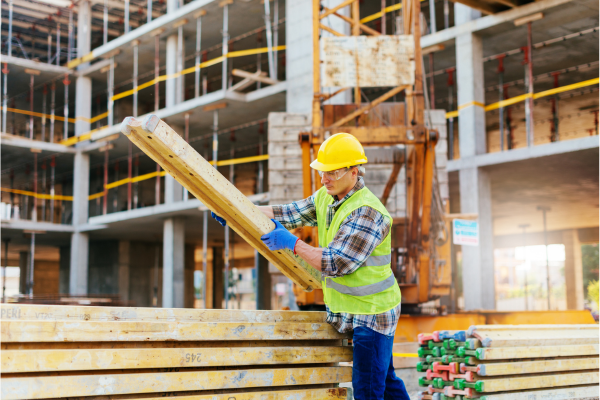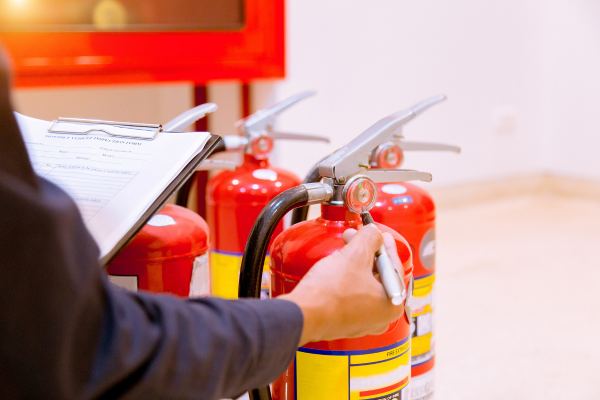In 2017, 72 people lost their lives in the Grenfell Tower tragedy, after fire was able to spread quickly through the block of flats due to what appeared to be various building safety defects. The most significant of these was the unsafe cladding that covered the exterior of the building, but there were other fire safety issues too.
In the years since then, a number of new laws regarding safety in multi-occupied buildings in England have been introduced, with the regulations tightening and becoming more complex as the number of storeys increases.

The two most recent laws to come into force are the Building Safety Act 2022 and the Fire Safety Regulations 2022, which the DLUHC has called “the biggest improvements in building safety for a generation”.
So, if you’re a landlord with a House in Multiple Occupation (HMO) or a flat in a block, here are five things about building safety that you need to know:
- You may need an EWS1 form to sell or remortgage your property
This is essentially a certificate proving that the external walls of a residential apartment building are safe, and while not every building will require one to be sold or remortgaged, it’s important to check. To secure the form, a qualified professional must assess the building to make sure any cladding is suitable or whether remediation work is required. Only one form is needed for a building, so flats don’t have to be assessed individually, and it’s valid for five years.
- If you are a ‘qualifying leaseholder’ you shouldn’t have to pay for remedial works
Under the Building Safety Act, if your leasehold flat is in a building of more than 5 storeys or 11 meters in height and provided you don’t own any more than three UK residential properties, the building owner cannot charge you for remedial works on dangerous cladding.
- Multi-occupied buildings that fall under the regulations must have a ‘Responsible Person’ appointed
This is someone who is legally responsible for ensuring specific fire safety duties are carried out and it can be an individual or an organisation, e.g. the managing agent for the building or the residents’ management company. This applies to any property that contains:
- Two or more sets of domestic premises eg a Victorian terrace turned into flats
- Common parts through which residents would need to evacuate in an emergency.
The higher the building, the more responsibilities fall on the Responsible Person, but the minimum duties are:
- Displaying fire safety instructions in the building, including how to report fire and the evacuation strategy
- Providing certain information about fire doors to residents
- Making sure these instructions and information are provided to residents when they move in and every year after that.
See the Government website for full information on the additional duties that apply for buildings over 11m and high-rise buildings.

- Existing fire safety regulations for HMOs have not changed
While the new rules require a Responsible Person to be appointed for HMOs, it’s important to know that the other existing regulations remain unchanged, so make sure that:
-
- You have carried out a written risk assessment
- You’ve had the electrical installation checked in the last 5 years
- You have compliant internal fire doors
- You have interconnected and mains smoke alarms on every floor and in every individual unit, plus a heat alarm in the kitchen
- There is a multi-purpose fire extinguisher on each floor and a fire blanket in the kitchen
- Your tenants are aware they need to keep exit routes clear and know how to evacuate if fire breaks out.
- If you use a managing agent, check what service they’re prepared to provide
In the case of HMOs, it is rare a letting agent would become a licence holder so the landlord would remain as the licence holder however the level of responsibility the letting agent could/would have would need to be agreed.
Agents who let flats in multi-occupied buildings should know and understand the new rules, particularly around Responsible Persons, but it’s worth checking with them.
Finally, as a result of the new regulations and the onus placed on legal companies to ensure all the correct documentation is in place, the fees charged by solicitors and conveyancers for work on leasehold properties are likely to be higher – and some legal companies have actually stopped dealing with flats in high-rise buildings altogether because they can’t get indemnity insurance for their work. So you’ll need to be prepared to pay more in conveyancing fees when you next come to buy or sell a leasehold property.
Because the new rules are complex, particularly if your property is in a high-rise building, it’s vital to seek expert advice. We’re always here to help where we can, so do get in touch with your local branch if you have any questions, so we can make sure your property complies with legislation.








